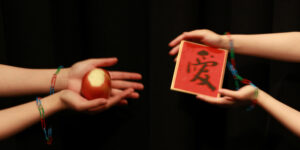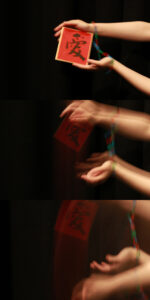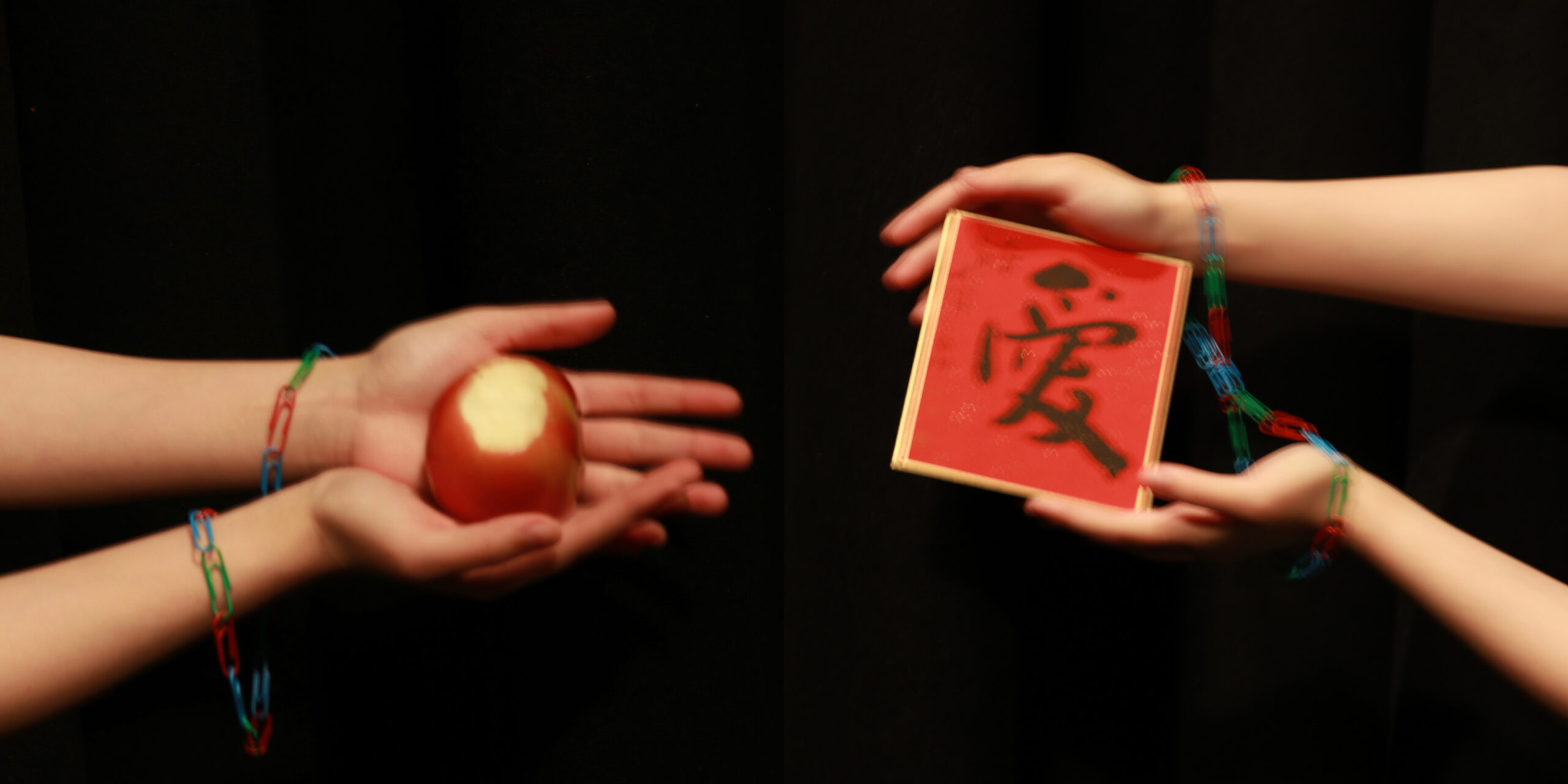

My creative photography reflects on a sensational event that occurred in China and spread very fast on the Internet. A tragic incident occurred in Fengxian County, Xuzhou City, Jiangsu Province, China in January 2022. There was a video that circulated on social media platforms on January 27, 2022, of a woman who gave birth to eight children in Fengxian County. During the video, a woman with a slurred tongue and a chain appears to be the mother of eight children, and she seems to have difficulty in communicating. Local authorities initially determined that there were nothing about human trafficking in this incident and the parents were legally married. After persistent public pressure, Chinese authorities conducted two higher-level investigations that resulted in two people being arrested. It was not only the inhumane experience of the mother that most disappointed and puzzled netizens in this incident, but also the government’s attempts to hide the truth from the very beginning, using the conflict between husband and wife to conceal the inadequacies of their management and inaction.
I used the studio in the Neilson Library, at Smith College, to shoot these two photos, and used Photoshop for some later operations like rotation and combination. Since I wanted to emphasize the group of victims of human trafficking instead of highlighting a particular individual, I selected a close-up shot of the hands instead of focusing on the subject’s facial expression and upper body movements like I used to do. Additionally, I intentionally blurred the photo in order to convey the sense of disappointment and powerlessness I felt when hearing about and following up the Chain Woman incident as a netizen who cared deeply about human rights and feminism, which was a sense of being stopped, cheated and fooled. Both photos feature a Chain, which is also representative of the Chain Woman incident. I made this chain using red, green, and blue paper clips. Here, the color choice refers to another case in which the government attempted to suppress the spread of the story on the Internet–the red, green, and blue kindergarten child abuse case. The general props and scene design reflect criticism and satire, as well as the frozen action. As we closely look at the first photograph, there is a pair of hands holding an apple with a bite on the left part of this photo, and a pair of hands holding the Chinese character “love” that is in the calligraphic style on the right part of the photo. In the same way as human life, the fruit represents our transient nature. The western art world has long represented fertility, vitality, youth, and abundance through fresh fruit. If the fruit is decaying, however, it symbolizes the inevitable and undeniable mortality of our presence in the world. This apple with a bite represents the tragedy of the mother who lost her youth to nothing but the government’s lie that the abduction incident was love, covering up their inaction.
I reduced the shutter speed of the camera in the second photo of creative photography to leave multiple actions on one image, which can enhance the story. The photo shows me dropping the calligraphic Chinese character “love” and trying to pick it up. This action represents that the government, under the pressure of public opinion, finally revealed through investigation that the incident was not actually a quarrel between the husband and wife, but a case of human trafficking. In the end, however, less and less people paid attention to this incident due to the government suppressing public opinion and punishing many netizens for spreading it online. We don’t know whether the “love” has been picked up or not, just like we don’t know in reality whether the mother got rescued in the end and found her own true love.
As an artistic medium, photography can be a powerful tool for creating and manipulating visual elements. We can interweave our identity with the story we wish to convey using this remixing tool. There are many factors that shape a person’s identity, such as his or her family and cultural background, as well as the environment in which they live and their personal choices and experiences. An individual’s identity plays an important role in how they relate to and interact with the world in which they live. Therefore, the same incident can be interpreted and reacted to by everyone in a totally different manner. Art becomes autonomous when our identity is integrated with the existing aesthetic system. This remix of my identity as a feminist and humanist in conjunction with the meaning of the apple with a bite in western art aesthetic systems activates the autonomy of art by triggering the audience to automatically comprehend the loss of youth representation from their everyday knowledge upon noticing the apple with a bite.
Since the definition of originality is blurry and polemic, remixing work always encounters plagiarism issues. The problem of plagiarism can easily arise even if creators come up with all their creative ideas independently without any outside help. After reviewing the definition of plagiarism, I conclude that there are two key criteria that should be considered when determining whether plagiarism has occurred: the incorrect intention to use the source, as well as the results of a lack of progress. Both definitions of plagiarism are interconnected, however, they focus on different stages of the plagiarism process. The first criterion focuses on the initial stage of creation, which detects our intention to create. In other words, if we create with the purpose of stealing others’ achievements at the beginning, we will surely use various methods to save time and effort to piece together unoriginal sources, such as patchwriting. The unethical behavior that took place in this project could also partly trigger the second criterion of plagiarism, as the original aim of our project did not include creating something new and useful to mankind. The second criterion focuses on the results of the “creation”, which is the final stage. It is hard to avoid thinking of the final results as a patchwork of all available sources if they do not contain any beneficial advances in the field. Regardless of whether the act is morally sound and arises from our lack of creativity, it is still plagiarism.

Comments are closed, but trackbacks and pingbacks are open.